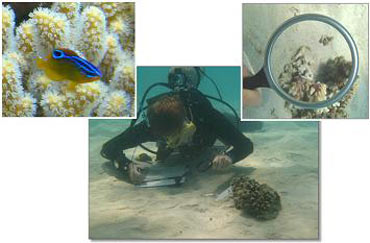191011-deathon-reef.jpg

Scientists studying young fish on a coral reef. Credit: Dr. Mark I. McCormick, James Cook University
For a young fish, moving too slow can get you snapped up by a bigger fish. But so can moving too fast, or even being too timid.
When small fish that live on coral reefs hatch, they stay near the surface, generally following the currents. When they get older, though, they settle on a nearby reef. But most of these new arrivals get eaten within a couple of days.
A recent study found a few common traits among the fish that are the first to go.
Led by University of Texas marine biologist Lee Fuiman, the study examined young damselfish on Australia’s Great Barrier Reef. In the lab, researchers measured how fast the fish swam and how they responded to possible predators. Then they released the fish on small patches of reef, and divers measured how bold the small fish were. Finally, they checked back every few hours until half of the test subjects were gone -- most likely because they were eaten: about 24 hours.
The first to go shared several traits. A slow response to danger was one. Another was that they were fast swimmers -- perhaps drawing attention to themselves as they skittered around the reef. And third, they were shy -- they were quicker to hide, and they stayed in their hiding places longer. The researchers suggest that shy fish may not be as aware of their surroundings as bolder ones, so it’s easier for predators to sneak up on them.
But it was harder to figure out which traits offered the best chance of survival. There’s no sure formula, it seems, for surviving the first few days on a coral reef.

